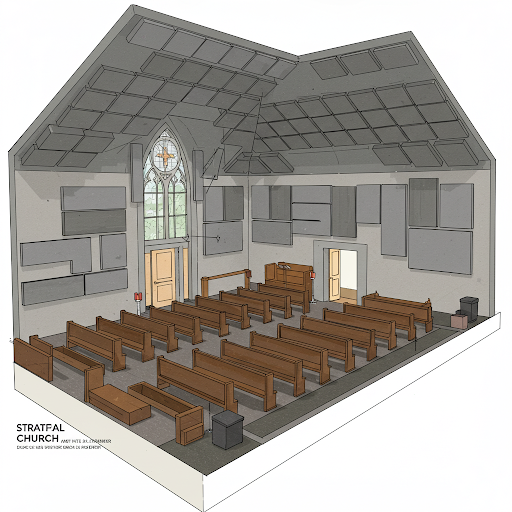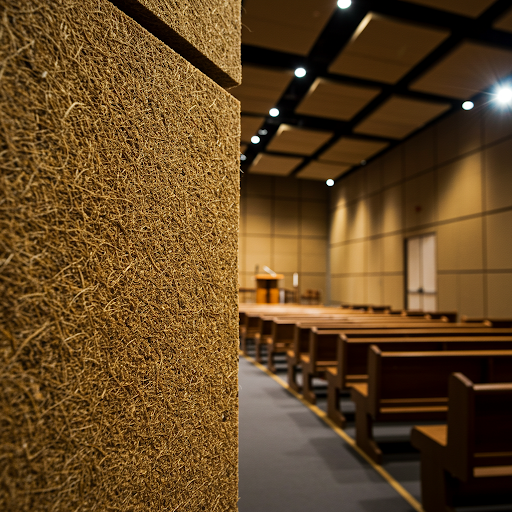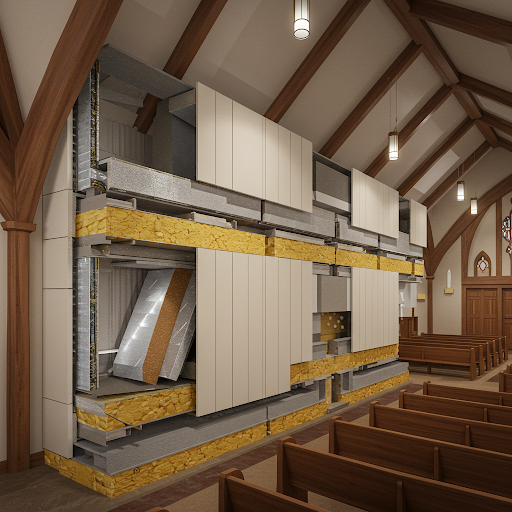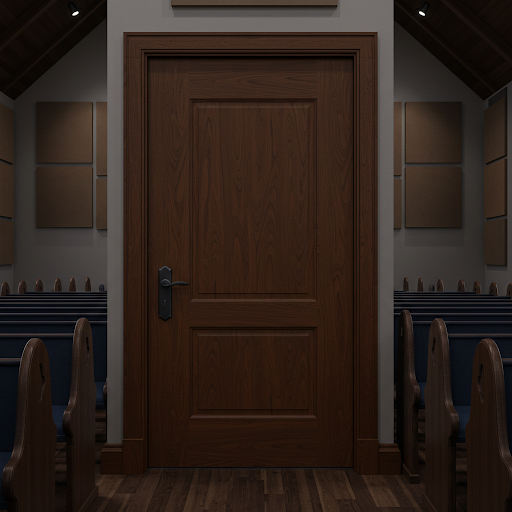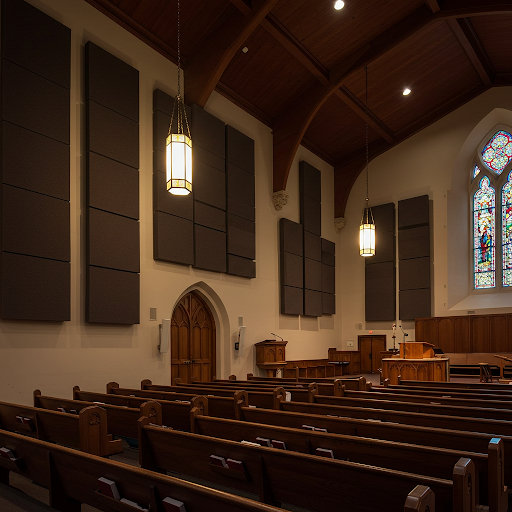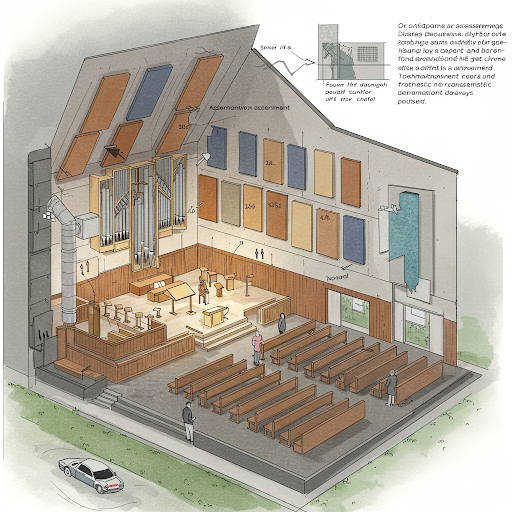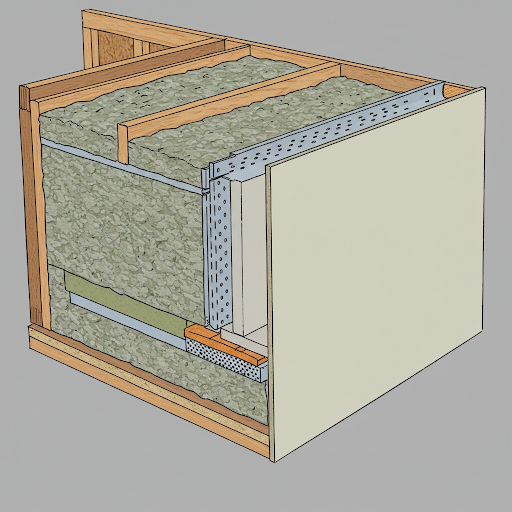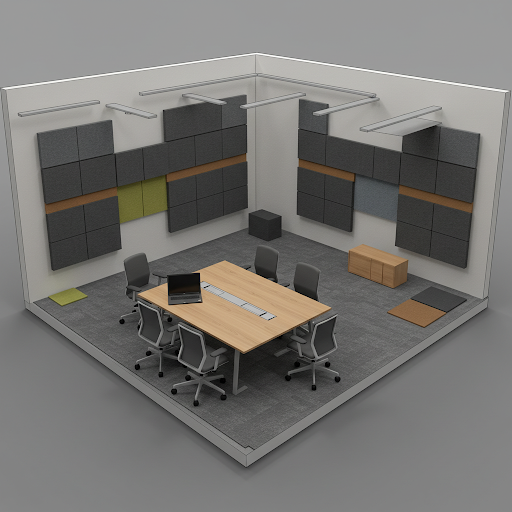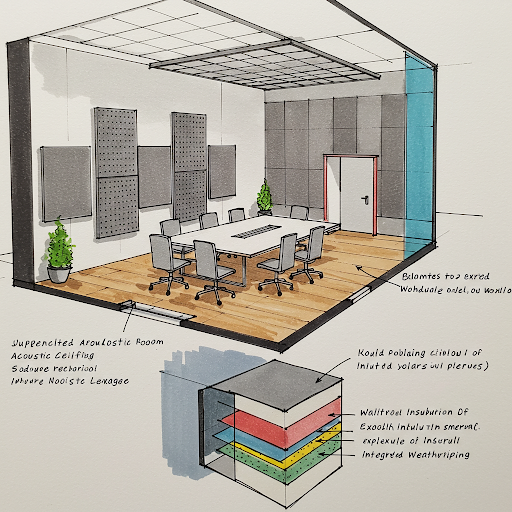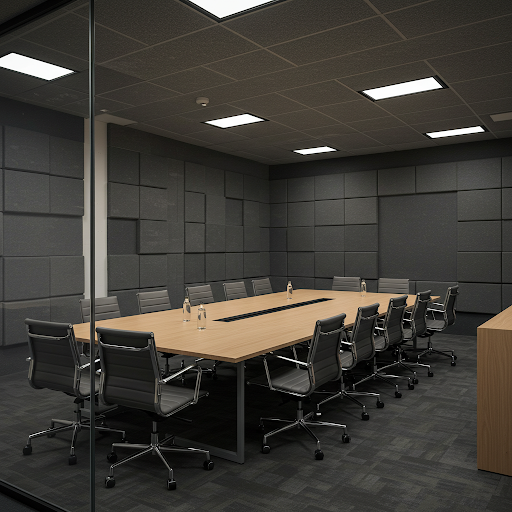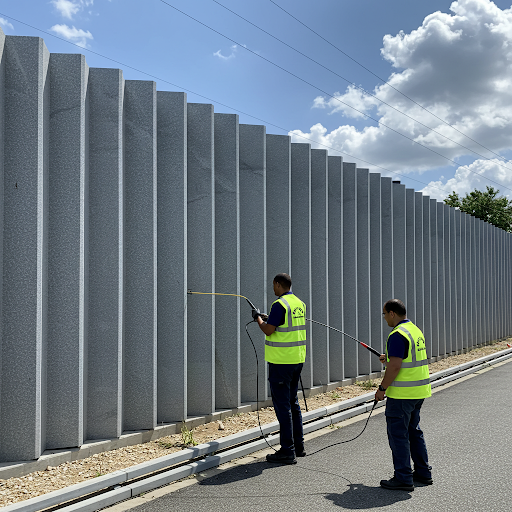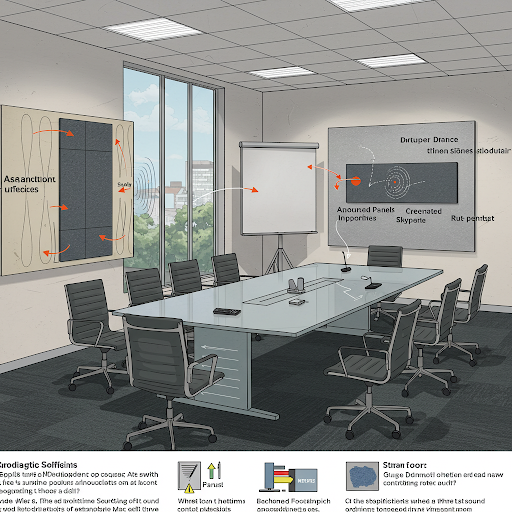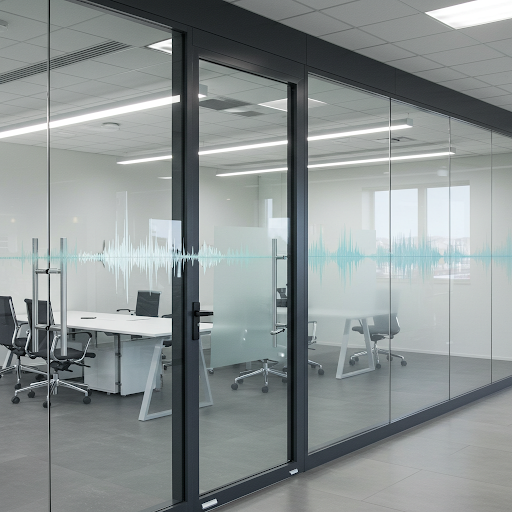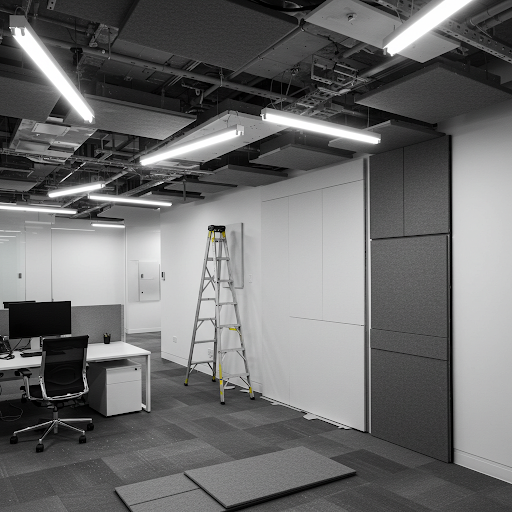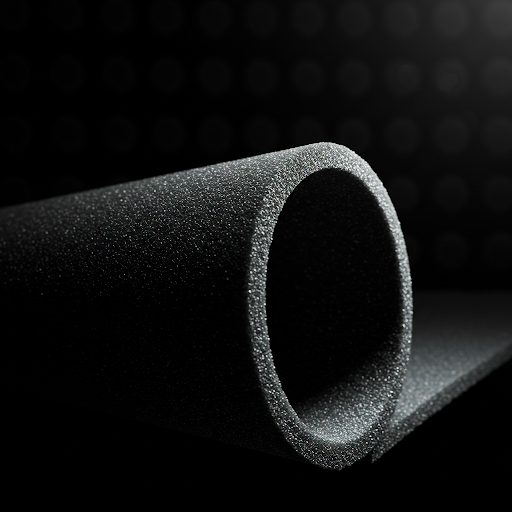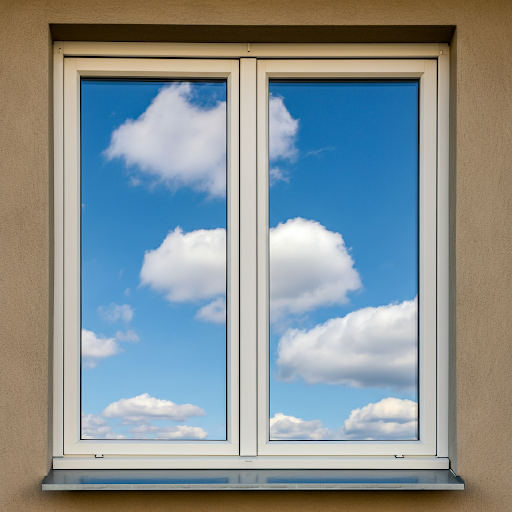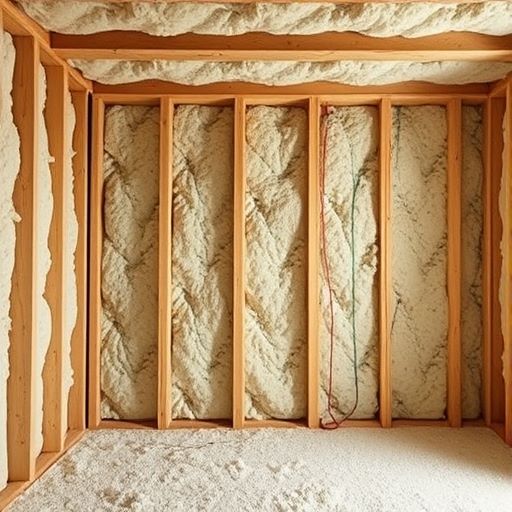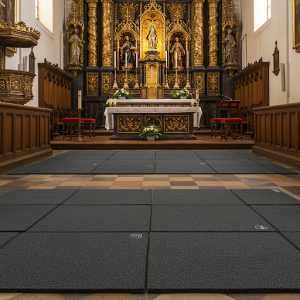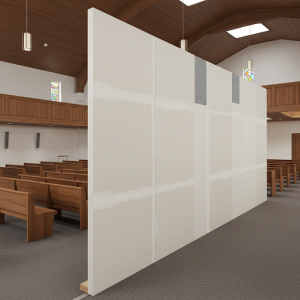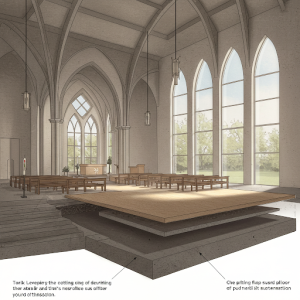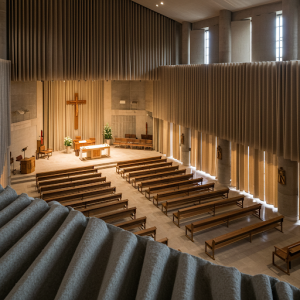Description
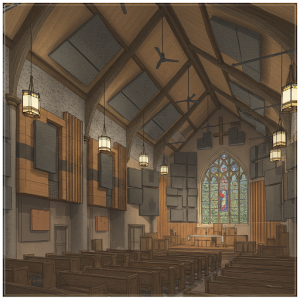
The Key Church Soundproofing Strategies are:
- Sound Blocking (Preventing Sound Transmission):
- Mass Loaded Vinyl (MLV): A dense, flexible material that adds mass to walls and ceilings, blocking airborne noise. Soundproof Drywall:
- Specialized drywall with increased density and damping properties.
- Sealing Gaps and Cracks: Using acoustic caulk and seals to eliminate sound leaks around windows, doors, and pipes. Soundproof Doors and Windows:
- Installing solid-core doors with proper seals and double- or triple-pane windows.
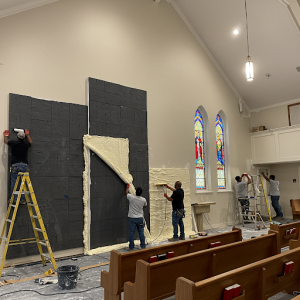
The above 5 Church Soundproofing Strategies encapsulate the fundamental principles of soundproofing a church. And specifically focus on blocking the transmission of external noise into a church environment. This approach is critical in churches, where clear, undistracted communication is paramount during services, events, and gatherings.
Therefore, if your concern is the opposite, i.e., church sound insulation, take a look at church acoustic treatment.

Sound Blocking in Church Soundproofing Strategies
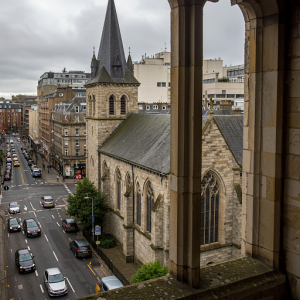
Churches, often located in urban or suburban settings, are susceptible to a variety of external noise sources.
Traffic noise, a constant hum in modern life, penetrates walls and windows, creating a distracting backdrop to sermons and hymns. Aircraft sounds, especially near airports, punctuate moments of quiet reflection with jarring intensity. Construction activities, with their hammering and drilling, impose rhythmic disruptions that compete with the rhythms of worship. General neighborhood disturbances, from lawnmowers to social gatherings, add to the cacophony.
These external noises erode the sanctity of church services, hindering the congregation’s ability to fully engage in worship. The clarity of the spoken word, essential for understanding sermons and readings, is compromised by background noise. Musical performances, intended to uplift and inspire, are diminished by competing sounds. Prayers, meant to be moments of intimate connection with the divine, are interrupted by unwelcome intrusions.
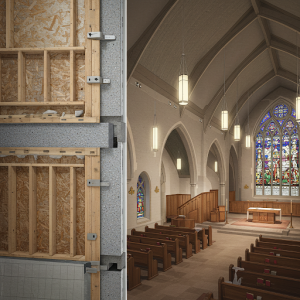
Sound blocking strategies, therefore, are not merely about noise reduction; they are about preserving the spiritual integrity of the church. By creating a barrier against external sounds, these strategies ensure that the church remains a sanctuary, a place of peace and focus. This allows the congregation to fully immerse themselves in the worship experience, free from the distractions of the outside world. The goal is to restore the church’s intended acoustic environment, a space where the voice of the preacher, the melody of the choir, and the silence of prayer can resonate without interference.
Mass Loaded Vinyl (MLV) Church Soundproofing Strategies
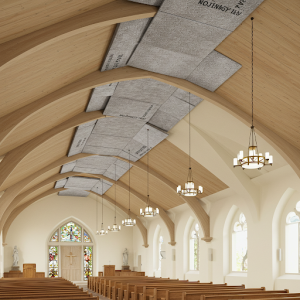
Mass Loaded Vinyl (MLV) stands as a cornerstone material in church soundproofing strategies, particularly when aiming to block airborne noise. Its effectiveness stems from its core characteristic: density. Unlike materials that rely on absorption or diffusion, MLV leverages sheer mass to impede sound wave transmission. This principle, rooted in physics, dictates that the heavier a barrier, the more energy sound waves must expend to penetrate it. This energy expenditure translates to a reduction in sound transmission, resulting in a quieter environment.
MLV’s flexibility is equally crucial to its utility. Unlike rigid, dense materials that can be challenging to install, MLV’s pliable nature allows it to conform to irregular surfaces, contours, and corners. This adaptability ensures maximum coverage, eliminating potential sound leaks that can compromise the overall soundproofing effort. It’s typically sandwiched between layers of drywall, plywood, or other building materials, creating a dense, continuous, and effective sound barrier.
Furthermore, MLV operates as a “limp mass” barrier. This means it doesn’t resonate like rigid materials. Instead, it absorbs and dissipates sound energy, converting it into minute amounts of heat. This dissipation minimizes the re-radiation of sound, further enhancing its sound-blocking capabilities. The dense, non-resonant nature of MLV makes it particularly effective at blocking low-frequency sounds, which are notoriously difficult to attenuate.
In church soundproofing, MLV’s application is invaluable. It can be strategically incorporated into wall, ceiling, and floor assemblies to combat external noise intrusion. Its thin profile allows for seamless integration without significantly altering the existing architecture. When properly installed, MLV creates a substantial barrier against traffic noise, aircraft sounds, and other disruptive external noises, contributing to a more peaceful and focused worship environment.
Soundproof Drywall Church Soundproofing Strategies
Soundproof drywall, a vital component in church soundproofing, represents a significant advancement in building materials designed to combat noise transmission. Its distinct advantage lies in its enhanced density and damping capabilities, setting it apart from standard drywall. This specialized drywall is engineered to minimize the passage of sound waves, contributing to a quieter and more serene worship environment.
The key to soundproof drywall’s effectiveness lies in its composition. It incorporates viscoelastic materials, which are substances that exhibit both viscous and elastic characteristics. These materials excel at absorbing and dissipating sound vibrations, transforming sound energy into minute amounts of heat. This process effectively reduces the amount of sound energy that travels through the wall, minimizing sound transmission.
Furthermore, soundproof drywall is often thicker and heavier than standard drywall. This increased mass provides an additional barrier against sound waves, making it more difficult for them to penetrate the wall. The combined effect of increased density and damping properties results in a significant reduction in sound transmission, creating a more effective sound barrier.
In church soundproofing, soundproof drywall is frequently used in conjunction with other soundproofing materials, such as Mass Loaded Vinyl (MLV). MLV adds mass and flexibility to the wall assembly, while soundproof drywall contributes damping and density. This combination creates a robust sound barrier that effectively blocks a wide range of sound frequencies.
The application of soundproof drywall is particularly beneficial in areas where external noise intrusion is a concern, such as near busy roads, airports, or industrial zones. It also helps to control internal sound transmission, preventing conversations or music from disturbing other areas of the church. By incorporating soundproof drywall into church soundproofing strategies, architects and builders can create acoustically comfortable spaces that enhance the worship experience.
Eliminating Sound Leaks: Church Soundproofing Strategies

The integrity of any soundproofing system hinges on meticulous attention to detail, particularly in sealing gaps and cracks. Even the most robust sound-blocking materials become ineffective if sound can bypass them through minute openings. Churches, with their intricate architectural details, are especially susceptible to sound leaks around windows, doors, pipes, and electrical outlets. These seemingly small gaps act as conduits for sound, undermining the overall soundproofing effort.
Acoustic caulk plays a critical role in addressing sound leaks. Unlike standard caulk, acoustic caulk remains flexible after application, accommodating the natural expansion and contraction of building materials. This flexibility prevents cracks from forming, ensuring a long-lasting seal against sound transmission. It effectively closes gaps between dissimilar materials, such as drywall and concrete, or around pipe and wire penetrations.
Acoustic seals, including weatherstripping and door sweeps, are indispensable for eliminating sound leaks around doors and windows. Weatherstripping forms a tight seal between the door or window frame and the opening, preventing sound from passing through the perimeter. Door sweeps, installed at the bottom of doors, close the gap between the door and the floor, blocking sound from traveling underneath.
By meticulously sealing gaps and cracks with acoustic caulk and seals, churches can create a continuous sound barrier, maximizing the effectiveness of their soundproofing strategies. This attention to detail ensures that the sanctuary remains a peaceful and focused space for worship.
Church Soundproofing Strategies for Temple Acoustic Barriers
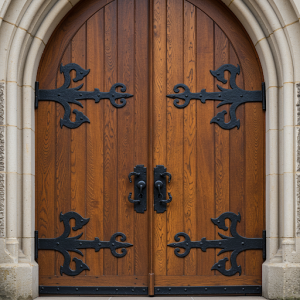
Doors and windows, due to their inherent design, often present the weakest links in a church’s soundproofing strategy. They are essentially openings within the building’s envelope, making them prime pathways for sound transmission. To counteract this, specialized soundproof doors and windows are essential for creating a robust acoustic barrier.
Solid-core doors are a significant improvement over hollow-core doors. Their dense construction, typically involving solid wood or composite materials, provides a substantial barrier against sound waves. The increased mass effectively impedes sound transmission, resulting in a noticeable reduction in noise penetration. Proper seals and weatherstripping around the door frame are also crucial to prevent sound leaks.
Soundproof windows are engineered with multiple layers of glass, typically double or triple panes, separated by air or gas-filled spaces. These air gaps act as effective sound barriers, significantly reducing the amount of sound that travels through the window. The air or gas within the gaps acts as a poor conductor of sound, impeding its passage. Laminated glass, often incorporated into soundproof windows, further enhances sound reduction. Laminated glass consists of two or more layers of glass bonded together with a plastic interlayer. This interlayer acts as a damping material, absorbing and dissipating sound vibrations.
Sound Blocking in Church Soundproofing Strategies
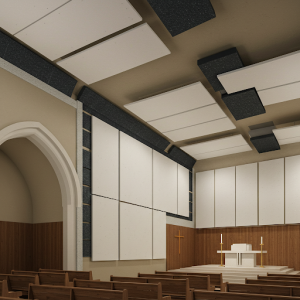
Implementing these sound-blocking strategies in a church requires careful planning and execution. It is essential to consider the church’s architectural design, existing building materials, and specific noise challenges. A comprehensive acoustic assessment can help identify the most effective soundproofing solutions.
Construction Considerations
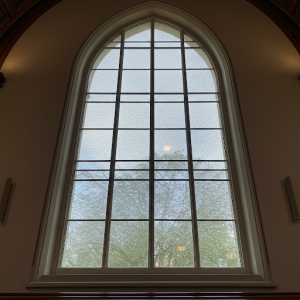 Construction considerations are vital in church soundproofing. Double-stud walls, built with an air gap, effectively block sound transmission. Staggered stud walls, with offset studs, prevent direct sound paths. Resilient channels, attached to ceiling joists, decouple drywall, minimizing vibration transfer. Floating floors, laid on resilient underlayment, reduce impact and airborne noise.
Construction considerations are vital in church soundproofing. Double-stud walls, built with an air gap, effectively block sound transmission. Staggered stud walls, with offset studs, prevent direct sound paths. Resilient channels, attached to ceiling joists, decouple drywall, minimizing vibration transfer. Floating floors, laid on resilient underlayment, reduce impact and airborne noise.
Attention to detail is crucial. Sealing all penetrations—pipes, wires, and ducts—with acoustic caulk prevents sound leaks. Doors and windows, often weak points, require solid-core doors with tight seals and double- or triple-pane windows with laminated glass.
Existing structural elements influence choices. Old stone walls might necessitate interior wall treatments, while modern constructions allow for integrated soundproofing. The building’s shape and size dictate the extent of treatment. High ceilings demand specialized solutions like ceiling clouds or baffles.
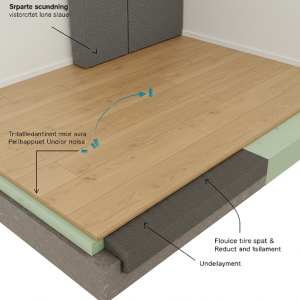 Finally, integrating these solutions during construction or renovation is more effective and less disruptive than retrofitting.
Finally, integrating these solutions during construction or renovation is more effective and less disruptive than retrofitting.
Church Ceiling and Floor Construction
Ceiling and floor construction play a pivotal role in church soundproofing, as these surfaces significantly contribute to sound transmission and reverberation. Effective strategies address both airborne and impact noise, ensuring a serene worship environment.
Church ceiling soundproofing
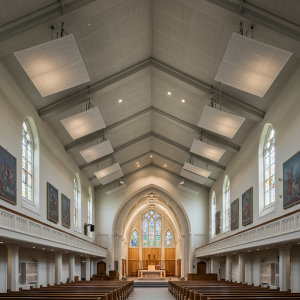
For ceilings, resilient channels are a cornerstone technique. These thin metal channels are attached to ceiling joists, and the drywall is then screwed into the channels. This decouples the drywall from the joists, preventing sound vibrations from directly transferring through the structure. This is particularly effective in reducing airborne noise, like conversations or music from adjacent rooms or above. In high-ceilinged churches, ceiling clouds or baffles, suspended panels that absorb sound, are also essential. These treatments minimize reverberation and echoes, enhancing speech clarity and musical fidelity.
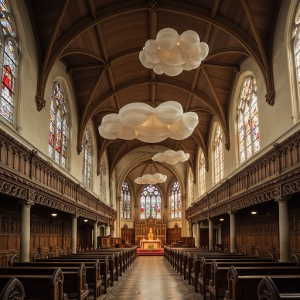
The pathway for impact noise: Church Floor Soundproofing
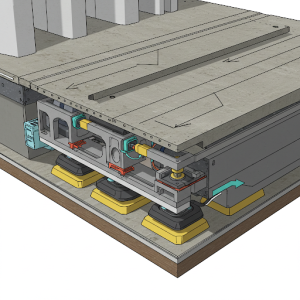
Floors present a different challenge, as they are primary pathways for impact noise, such as footsteps or falling objects. Floating floors are a highly effective solution. This involves installing a new floor layer on resilient underlayment, effectively creating an air gap between the new floor and the existing subfloor. The resilient underlayment, made from materials like rubber or cork, absorbs vibrations, preventing them from traveling through the building structure. This approach significantly reduces the impact of noise transmission.
In addition to floating floors, soundproof underlayment can be used beneath carpets, tiles, or hardwood floors. These underlayments, often made from dense, resilient materials, add mass and damping to the floor, reducing both impact and airborne noise transmission. Carpets and rugs, especially thick and plush ones, are natural sound absorbers and should be incorporated whenever possible.
Attention to detail is crucial. Sealing gaps and cracks around floor and ceiling penetrations—pipes, wires, and ducts—with acoustic caulk is essential to prevent sound leaks. The choice of flooring material also impacts sound transmission. Hard surfaces like tile and concrete reflect sound, while softer surfaces like carpet absorb it. By carefully considering ceiling and floor construction, churches can create acoustically comfortable spaces for worship.
HVAC and Mechanical Systems
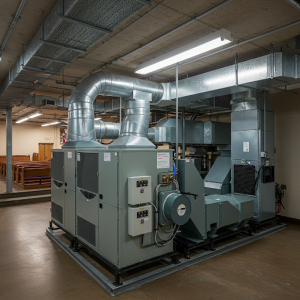
Vibration isolation mounts are crucial for reducing noise from HVAC and mechanical systems in churches. Duct silencers, installed within air ducts, absorb and dampen airflow noise.
Vibration isolation mounts decouple noisy equipment from the building’s structure, preventing vibrations from transmitting through walls and floors. For particularly loud machinery, soundproof enclosures provide a barrier, containing the noise within a dedicated space. These strategies ensure that mechanical system noise doesn’t disrupt services, creating a more peaceful and focused worship environment.
 Church Aesthetic Considerations
Church Aesthetic Considerations
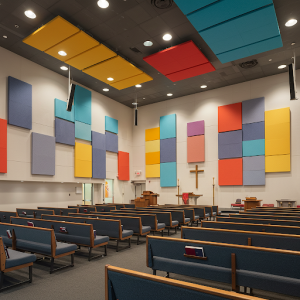
Aesthetic considerations are paramount in church soundproofing strategies. Solutions must harmonize with the sacred space’s architectural beauty and historical significance. Fabric-wrapped acoustic panels, available in diverse colors and textures, can blend seamlessly or become design features.
Reclaimed wood diffusers add warmth and character while controlling sound. Soundproof materials can be concealed behind decorative finishes, preserving the church’s visual integrity. The goal is to achieve optimal acoustics without compromising the church’s unique aesthetic, ensuring a serene and visually pleasing worship environment. 200 words.
In church soundproofing, aesthetics are not secondary; they are integral to the project’s success. Churches, often repositories of history and artistic expression, demand solutions that respect their visual integrity. The challenge lies in achieving optimal acoustics without disrupting the sacred space’s inherent beauty.
Fabric-wrapped acoustic panels offer a versatile solution. Their customizable nature, with a wide array of colors and textures, allows them to either blend seamlessly with the existing décor or serve as deliberate design elements. Reclaimed wood diffusers, with their natural warmth and character, provide effective sound control while adding a touch of rustic elegance. These diffusers scatter sound waves, preventing echoes without absorbing them entirely, maintaining a lively acoustic.
Concealing soundproof materials behind decorative finishes is another crucial strategy. Walls can be built to hide MLV or soundproof drywall, and ceilings can be dropped to hide acoustic treatments. This approach ensures that the church’s visual aesthetic remains undisturbed. The ultimate goal is to create a serene and visually pleasing worship environment where sound quality enhances, rather than detracts from, the spiritual experience. This delicate balance between acoustic performance and aesthetic preservation is essential for creating a space that is both functional and beautiful.
Long-Term Benefits
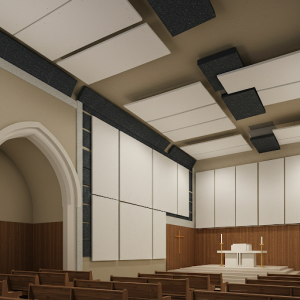 Sound-blocking investments in churches yield enduring benefits, transforming the worship experience. A peaceful sanctuary, free from external noise, fosters deeper spiritual engagement. Sermons and musical performances gain clarity, ensuring the congregation fully receives the intended message. This creates a more focused and meaningful atmosphere, enhancing the overall experience.
Sound-blocking investments in churches yield enduring benefits, transforming the worship experience. A peaceful sanctuary, free from external noise, fosters deeper spiritual engagement. Sermons and musical performances gain clarity, ensuring the congregation fully receives the intended message. This creates a more focused and meaningful atmosphere, enhancing the overall experience.
Minimizing distractions allows for undistracted prayer and reflection. The return on investment extends beyond immediate services, contributing to a lasting sense of tranquility. Given the complexities of soundproofing, professional guidance is crucial.
Acoustical experts assess the church’s unique needs, recommending optimal materials and techniques. This ensures effective sound blocking, preventing costly errors and maximizing the system’s longevity. Their expertise safeguards the church’s acoustic environment for years to come.

